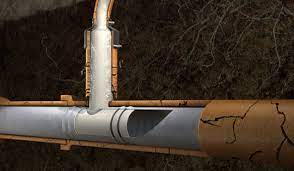Over time, the pipes under homes and buildings suffer damage from rust, roots, cracks, and corrosion. Traditional pipe replacement is messy and invasive. As per experts like The Relining Company, Pipe relining offers a minimally invasive solution. The process involves coating old pipes with a seamless epoxy barrier to essentially create a new pipe from the inside. Here’s an overview of how the complete pipe relining process works..
Inspection
The first step is a video inspection. A technician feeds a waterproof camera through the entire pipe system from access points like manholes or cleanouts. The video reveals the type and extent of damage and pinpoints problem spots. This lets technicians customize the repair plan and materials.
Cleaning
Next, the pipes undergo thorough cleaning using high-pressure water jets. Built-up scale, rust, roots, grease, and debris must be removed so the epoxy barrier can adhere directly to the pipe walls. Flushing loosens the material while powerful vacuum trucks suck out the slurry.
Repairs
Before relining, technicians make spot repairs where pipes are severely broken or offset. Small isolated cracks and holes get sealed with epoxy patches smoothed over the defects. Separated joints are realigned and resealed. These repairs tackle the worst damage so the relining can do its job.
Resin Saturation
Now the pipes are ready for the epoxy resin that forms the protective new lining. Felt tubes soaked in two-part epoxy are fed through the pipes. As they travel through, the resin saturates the felt while the tube smooths and compresses it. A final pass with a calibration hose ensures the lining coats all crevices.
Curing
Once saturated, the epoxy soaks into the old pipe walls and begins hardening. Technicians use hot water, steam, or UV light to accelerate the curing process. The resin transforms from a liquid state to a solid, seamless pipe lining. Curing times range from 2-6 hours. The new barrier is now fused permanently in place.
Final Testing
Finally, technicians run tests to ensure a leak-free pipe system. Pressure tests confirm the epoxy lining is sealed tight with no pinholes or weak spots. Videos are taken to visually verify full coverage and smooth flows through the pipes. The relined pipes are now restored without digging or replacement.
Relining Benefits
Pipe relining offers many advantages over traditional replacement:
- Less invasive – Access only requires small excavation points rather than trenching up floors and yards.
- Faster repairs – Curing takes just hours rather than days of labor and waiting for concrete to set.
- Cost savings – Relining averages 30-50% less than full replacement costs.
- Materials savings – Repairing rather than removing and replacing pipe conserves resources.
- Minimized disruption – Household or business operations can often continue during the short process.
Relining Limitations
While highly effective for restoration, pipe relining does have some limitations:
- Very large pipes exceeding 12 inches in diameter may need replacement. The resins can’t coat the full circumference effectively.
- Severely misaligned or collapsed pipes also may not be good candidates if alignment can’t be restored.
- Extreme damage like large holes and missing sections still requires pipe replacement as patching alone isn’t enough.
Conclusion
An experienced plumbing professional can assess if relining is feasible after thorough inspections. With the right conditions, pipe relining provides an excellent minimally invasive option for restoring your drainage system.

